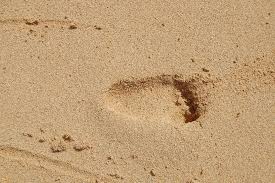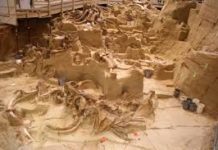As scientists to continue to explore our evolutionary relatives via their fossils, we’re able to continually expand our knowledge about the creatures that came before us in history. Recently, two new studies have revealed some rather interesting discoveries about the enigmatic “Little Foot” fossil.
Science News reports on the results from the first formal analysis of the 3.67-million-year-old skeleton Little Foot. Believed to be an adult female of a primate-like species of currently indeterminate origin, scientists have long wondered exactly where she might fit into the evolutionary structure of humans and their relatives both past and present.
Those questions are a bit closer to being answered, as paleoanthropologist Ronald Clarke and paleoanthropologist Amélie Beaudet were able to study Little Foot recently. They accomplished this by construction 3D models of Little Foot’s skull and, using the dimensions available, reconstructed various parts to their best fit that weren’t able to survive to fossilization.
When looking at what is estimated to be the size of her brain, a few conclusions could be drawn. For one, Little Foot’s brain was, in size and structure, much closer to a chimp’s than a human’s, being around 1/3 of the size of the modern human’s and having a larger area dedicated to visual interpretation closer to non-human primates. That being said, a cluster of blood vessels near the back was quite distinctly human, the researchers theorizing this could have been one asset to evolution.
Most striking of all was that, compared to various other fossils recovered from the southern areas of Africa where Little Foot was found, no similar specimens seem to be a match in terms of genus or species. Some of the most likely candidates and the samples tested against Little Foot were the Australopithecus africanus and Paranthropus robustus. The fact that neither was a good match based on brain structure was not surprising, the teams say, as Little Foot is significantly older than the both of them.
The second tests involved a model of Little Foot’s inner ear, revealing a structure similar to the combination of both human and chimp. Models revealed structures similar to both a chimp’s semicircular canals and human’s cochlea, lending weight to the theory that Little Foot moved on two legs and navigates through trees due to these parts playing a key part in balance and coordination as well as the range of sound a being can hear.
While there is obviously more study to be done on Little Foot and others like her, these new findings are quite revealing on their own.






